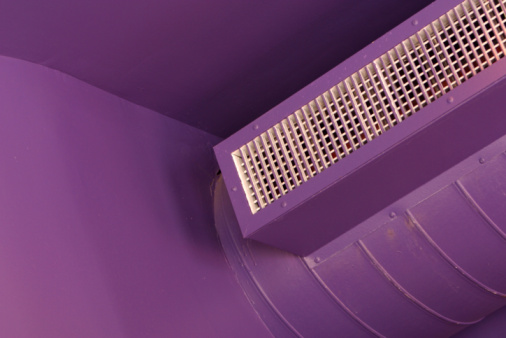If you are in the HVAC business then you are most likely aware of the resurgence of Legionnaires’ Disease in New York. This outbreak just like many others has been traced back to a HVAC system on a tall building in a main part of town. Since it is a localized location many people may have been affected by the disease without even knowing it. This happened just because they walked down the street near the area of the building. How is it spreading so easily and affecting so many people?
Legionnaires’ Disease is a type of pneumonia that presents itself with high fever, aches, chills, coughing among other systems. Even though it can be treated with antibiotics there are still a number of patients that will die from the disease. It is spread in contaminated mist and water vapor that is then breathed into the body. Knowing what to look for is very important.
The reason the HVAC professionals need to be aware of the disease is that it is most often found in warm moist environments. This makes cooling towers and large air conditioning systems the perfect breeding ground. People then become infected when they breathe in the spores that are spread throughout the air by the system. In large gathering places such as hospitals or hotels a perfect disaster could be forming. This actually is where the diseases name came from. The American Legion was having a large convention in 1976 when 221 attendees came down with an unknown illness. Thirty four of the members ended up succumbing to the illness. The disease has been spread by other means such as shower heads, hot tubs, indoor fountains and other areas where warm water can become stagnant. The largest offenders are still HVAC systems because of the amount of people that can be affected at one time.
There has not been a definite solution to stopping the spread of the virus but being aware is a step in the right direction. Even with all of the advancements in technology and medicine each year there are small outbreaks of the disease.
Follow us for more articles on HVAC systems comfortable and efficient running.
Understanding the Importance of Regular HVAC Maintenance
HVAC systems play a crucial role in maintaining air quality, especially in public spaces like hotels, hospitals, and office buildings. However, improper maintenance of these systems can create ideal breeding grounds for Legionella bacteria, which causes Legionnaires’ Disease. According to the CDC, regular maintenance—like cleaning and disinfecting cooling towers—is essential to prevent bacterial growth. In fact, studies have shown that the risk of Legionella outbreaks decreases by 90% when HVAC systems are cleaned regularly.
Not only does this help prevent disease, but it also ensures your HVAC system runs efficiently, reducing energy consumption and lowering operational costs.
The Role of Building Design in Legionella Risk
Building design can significantly impact the likelihood of Legionnaires’ Disease outbreaks. Buildings with complex water systems, like cooling towers, indoor fountains, and hot tubs, are particularly susceptible. These systems often provide the warm, stagnant water that Legionella bacteria thrive in. Proper design, with easy-to-maintain water systems, is key to minimizing this risk. A study from New York University found that building systems built before 1990 have a 40% higher chance of harboring Legionella, simply due to outdated water management practices.
Modern solutions include installing automatic monitoring systems that can detect and correct imbalances in water temperature and pH levels before they become a problem.
The Impact of Legionnaires’ Disease on Public Health and Safety
While Legionnaires’ Disease can be deadly, its impact extends beyond the immediate health risks. It can lead to legal and financial consequences for businesses, particularly those in the hospitality and healthcare industries. A major outbreak in a hospital or hotel can result in lawsuits, loss of reputation, and costly legal fees. For instance, in 2015, a hotel in New York faced a multi-million-dollar lawsuit following a Legionnaires’ outbreak that affected over 100 people
Ensuring the safety of HVAC systems is not just a public health priority, but a financial one as well. Building owners should proactively manage their systems to avoid the potential legal and financial fallout of an outbreak.
These measures—ranging from regular maintenance to modernizing building design—are key to minimizing the risk of Legionnaires’ Disease in HVAC systems, thus protecting both public health and business interests.
Frequently Asked Questions
1. What are the main causes of Legionnaires’ Disease?
Legionnaires’ Disease is caused by Legionella bacteria, which thrive in warm, stagnant water. Common sources include HVAC systems, cooling towers, hot tubs, and indoor fountains. In fact, a study from the CDC found that 80% of outbreaks are linked to building water systems, especially in large structures like hospitals and hotels.
2. How is Legionnaires’ Disease transmitted?
Legionnaires’ Disease spreads through inhaling aerosolized water droplets containing Legionella bacteria. This can occur from mist or vapor emitted by air conditioning systems, cooling towers, or even decorative fountains. Direct person-to-person transmission does not occur. Each year, the U.S. sees about 9,000 to 18,000 reported cases.
3. Who is most at risk for Legionnaires’ Disease?
Those over 50 years old, smokers, individuals with chronic lung conditions, or weakened immune systems are more susceptible. According to the CDC, people with underlying health conditions face a 30% higher risk of severe outcomes, including hospitalization or death.
4. What are the symptoms of Legionnaires’ Disease?
Symptoms often mirror pneumonia and include high fever, chills, cough, shortness of breath, and muscle aches. Complications can lead to kidney failure or respiratory failure. The CDC reports that 1 in 10 people with Legionnaires’ Disease will die, especially if not treated promptly.
5. How can Legionnaires’ Disease outbreaks be prevented?
Routine maintenance of cooling systems and water sources is essential to prevent Legionella growth. This includes regular disinfection, cleaning, and water testing. Cities like New York have implemented strict regulations, requiring building owners to test and clean their cooling towers annually to reduce risks.




